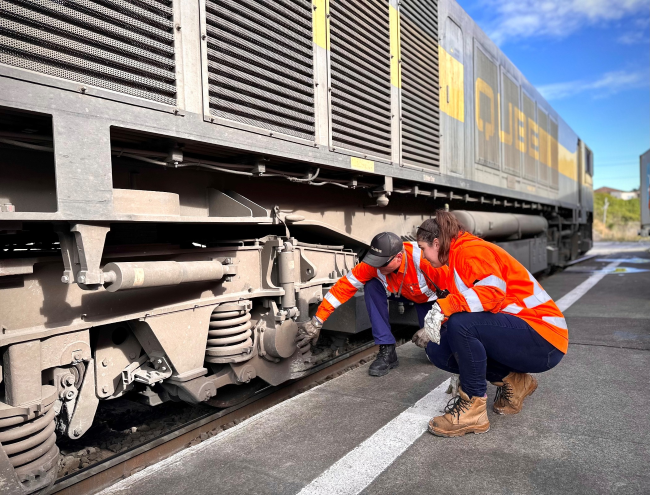Latest news
Ministers have asked the NTC to review existing rolling stock approval processes to help streamline them and develop a more common approach. This includes developing guidance to clarify these processes to enhance efficiency and reduce costs for the rail industry.
We know there are major inconsistencies across the industry, and varied approaches are driving up the cost and time it takes to get new rolling stock approved.
Rail infrastructure managers (RIMs) request varying levels of information from rolling stock operators (RSOs), different terminology is often used, and the various stages of rolling stock approval such as certification, registration and network approval are often conflated.
To help streamline this process and develop a more common approach, we’ve released a consultation paper and are seeking industry feedback. Learn more and have your say below.
Have your say
We are seeking feedback on our streamlining rolling stock approval processes consultation paper. The paper outlines several questions for your consideration.
Have your say by emailing us at rollingstock@ntc.gov.au.
The closing date for feedback is Tuesday 3 June 2025.
The paper consists of two sections. The first provides an analysis of the current state, including:
- problems with existing processes as reported by stakeholders
- a review of existing application forms
- current guidance on the roles and responsibilities of RIMs and RSOs for approving and accepting rolling stock in the current legislative framework
- current guidance from ONRSR for safe operations.
The second half seeks feedback on potential initiatives to address these issues by clarifying the roles and responsibilities of different parties. It outlines:
- key learnings from safety assurance approaches overseas and other transport settings
- potential opportunities for improvements aimed at developing a consistent approach to RSO and RIM roles and responsibilities, applied to the key steps in the approval process.
Your feedback will help develop guidance on rolling stock safety assurance processes. This guidance will then inform the future pilot of a single national application approach to registering rolling stock operating on the National Network for Interoperability, as well as investigating harmonising rolling stock testing requirements and locations.
For reference, the rolling stock approval application forms identified in the paper can be found here. The forms are current as at 6 May 2025 and used as a reference for the paper. Please contact the relevant RIM to access the latest versions.
Making it easier to get new trains approved
Australia’s nine major rail infrastructure managers each have their own sets of rules and unique approval processes for getting new trains on the network.
These processes can vary greatly. Networks rarely share information or recognise each other’s assessments. And often require very different levels of detail.
This means that an operator working across more than one network needs to navigate a unique approval process for each network on which they operate.
This is a major challenge for operators and the rail industry. Particularly freight operators moving goods between our cities, regions and ports.
It is:
- costly
- duplicates effort
- deters investment in newer, innovative rolling stock.
In some cases, operators still use older and less efficient trains because of the difficulty and time it takes to get new trains approved.
The National Rail Action Plan (NRAP) is streamlining the rolling stock approval process so that it’s simpler to get new trains running.
This will pave the way for a better rail system with newer and safer trains that make rail freight more competitive. It will reduce road congestion and improve safety while also reducing transport emissions.
A simpler rolling stock approval process
Through NRAP, the NTC is working with networks, operators and the Office of the National Rail Safety Regulator (ONRSR) to remove the complexities and reduce differences between network requirements.
We are doing this by:
- developing guidance on safety assurance to help rail operators and rail infrastructure managers meet their obligations under the Rail Safety National Law
- piloting a single national application approach to reduce the administrative burden
- investigating ways to harmonise rolling stock testing requirements and locations.
An incentive for investment and innovation
By making it simpler to get trains approved to run on our networks, we can save Australia’s rail industry tens of millions of dollars a year. And encourage operators to invest in new, innovative rolling stock and technology that produce less carbon emissions.
This will pave the way for a better rail system with newer and safer trains that makes rail freight more competitive.
By helping to move a bigger share of freight onto rail, through NRAP we can:
- reduce congestion on roads
- improve safety
- reduce transport emissions and help Australia reach its net zero emissions targets.
